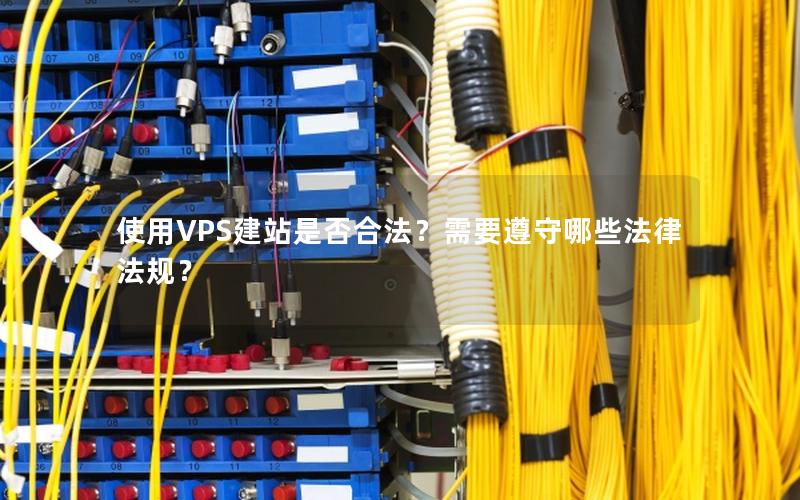一、简介
线程池类为 java.util.concurrent.threadpoolexecutor,常用构造方法为:
|
1
2
3
4
|
threadpoolexecutor(int corepoolsize, int maximumpoolsize,
long keepalivetime, timeunit unit,
blockingqueue workqueue,
rejectedexecutionhandler handler)
|
- corepoolsize: 线程池维护线程的最少数量
- maximumpoolsize:线程池维护线程的最大数量
- keepalivetime: 线程池维护线程所允许的空闲时间
- unit: 线程池维护线程所允许的空闲时间的单位
- workqueue: 线程池所使用的缓冲队列
- handler: 线程池对拒绝任务的处理策略
一个任务通过 execute(runnable)方法被添加到线程池,任务就是一个 runnable类型的对象,任务的执行方法就是 runnable类型对象的run()方法。
当一个任务通过execute(runnable)方法欲添加到线程池时:
- 如果此时线程池中的数量小于corepoolsize,即使线程池中的线程都处于空闲状态,也要创建新的线程来处理被添加的任务。
- 如果此时线程池中的数量等于 corepoolsize,但是缓冲队列 workqueue未满,那么任务被放入缓冲队列。
- 如果此时线程池中的数量大于corepoolsize,缓冲队列workqueue满,并且线程池中的数量小于maximumpoolsize,建新的线程来处理被添加的任务。
- 如果此时线程池中的数量大于corepoolsize,缓冲队列workqueue满,并且线程池中的数量等于maximumpoolsize,那么通过 handler所指定的策略来处理此任务。
也就是:处理任务的优先级为:
核心线程corepoolsize、任务队列workqueue、最大线程maximumpoolsize,如果三者都满了,使用handler处理被拒绝的任务。
当线程池中的线程数量大于 corepoolsize时,如果某线程空闲时间超过keepalivetime,线程将被终止。这样,线程池可以动态的调整池中的线程数。
unit可选的参数为java.util.concurrent.timeunit中的几个静态属性:
nanoseconds、microseconds、milliseconds、seconds。
workqueue我常用的是:java.util.concurrent.arrayblockingqueue
handler有四个选择:
- threadpoolexecutor.abortpolicy() 抛出java.util.concurrent.rejectedexecutionexception异常
- threadpoolexecutor.callerrunspolicy() 重试添加当前的任务,他会自动重复调用execute()方法
- threadpoolexecutor.discardoldestpolicy() 抛弃旧的任务
- threadpoolexecutor.discardpolicy() 抛弃当前的任务
二、一般用法举例
|
1
2
3
4
5
6
7
8
9
10
11
12
13
14
15
16
17
18
19
20
21
22
23
24
25
26
27
28
29
30
31
32
33
34
35
36
37
38
39
40
41
42
43
44
45
46
47
48
49
50
51
52
53
54
55
56
57
58
59
60
61
62
63
64
65
66
|
package demo;
import java.io.serializable;
import java.util.concurrent.arrayblockingqueue;
import java.util.concurrent.threadpoolexecutor;
import java.util.concurrent.timeunit;
public class testthreadpool2
{
private static int producetasksleeptime = 2;
private static int producetaskmaxnumber = 10;
public static void main(string[] args)
{
// 构造一个线程池
threadpoolexecutor threadpool = new threadpoolexecutor(2, 4, 3, timeunit.seconds, new arrayblockingqueue<runnable>(3),
new threadpoolexecutor.discardoldestpolicy());
for (int i = 1; i <= producetaskmaxnumber; i++)
{
try
{
// 产生一个任务,并将其加入到线程池
string task = "task@ " + i;
system.out.println("put " + task);
threadpool.execute(new threadpooltask(task));
// 便于观察,等待一段时间
thread.sleep(producetasksleeptime);
}
catch (exception e)
{
e.printstacktrace();
}
}
}
}
/**
* 线程池执行的任务
*/
class threadpooltask implements runnable, serializable
{
private static final long serialversionuid = 0;
private static int consumetasksleeptime = 2000;
// 保存任务所需要的数据
private object threadpooltaskdata;
threadpooltask(object tasks)
{
this.threadpooltaskdata = tasks;
}
public void run()
{
// 处理一个任务,这里的处理方式太简单了,仅仅是一个打印语句
system.out.println(thread.currentthread().getname());
system.out.println("start .." + threadpooltaskdata);
try
{
// //便于观察,等待一段时间
thread.sleep(consumetasksleeptime);
}
catch (exception e)
{
e.printstacktrace();
}
threadpooltaskdata = null;
}
public object gettask()
{
return this.threadpooltaskdata;
}
}
|
说明:
1、在这段程序中,一个任务就是一个runnable类型的对象,也就是一个threadpooltask类型的对象。
2、一般来说任务除了处理方式外,还需要处理的数据,处理的数据通过构造方法传给任务。
3、在这段程序中,main()方法相当于一个残忍的领导,他派发出许多任务,丢给一个叫 threadpool的任劳任怨的小组来做。
这个小组里面队员至少有两个,如果他们两个忙不过来,任务就被放到任务列表里面。
如果积压的任务过多,多到任务列表都装不下(超过3个)的时候,就雇佣新的队员来帮忙。但是基于成本的考虑,不能雇佣太多的队员,至多只能雇佣 4个。
如果四个队员都在忙时,再有新的任务,这个小组就处理不了了,任务就会被通过一种策略来处理,我们的处理方式是不停的派发,直到接受这个任务为止(更残忍!呵呵)。
因为队员工作是需要成本的,如果工作很闲,闲到 3seconds都没有新的任务了,那么有的队员就会被解雇了,但是,为了小组的正常运转,即使工作再闲,小组的队员也不能少于两个。
4、通过调整 producetasksleeptime和 consumetasksleeptime的大小来实现对派发任务和处理任务的速度的控制,改变这两个值就可以观察不同速率下程序的工作情况。
5、通过调整4中所指的数据,再加上调整任务丢弃策略,换上其他三种策略,就可以看出不同策略下的不同处理方式。
6、对于其他的使用方法,参看jdk的帮助,很容易理解和使用。
另一个例子:
|
1
2
3
4
5
6
7
8
9
10
11
12
13
14
15
16
17
18
19
20
21
22
23
24
25
26
27
28
29
30
31
32
33
34
35
36
37
38
39
40
41
42
43
44
45
46
47
48
49
50
51
52
53
54
55
56
57
58
59
60
61
62
63
64
65
66
67
68
69
70
71
72
73
74
75
76
|
package demo;
import java.util.queue;
import java.util.concurrent.arrayblockingqueue;
import java.util.concurrent.threadpoolexecutor;
import java.util.concurrent.timeunit;
public class threadpoolexecutortest
{
private static int queuedeep = 4;
public void createthreadpool()
{
/*
* 创建线程池,最小线程数为2,最大线程数为4,线程池维护线程的空闲时间为3秒,
* 使用队列深度为4的有界队列,如果执行程序尚未关闭,则位于工作队列头部的任务将被删除,
* 然后重试执行程序(如果再次失败,则重复此过程),里面已经根据队列深度对任务加载进行了控制。
*/
threadpoolexecutor tpe = new threadpoolexecutor(2, 4, 3, timeunit.seconds, new arrayblockingqueue<runnable>(queuedeep),
new threadpoolexecutor.discardoldestpolicy());
// 向线程池中添加 10 个任务
for (int i = 0; i < 10; i++)
{
try
{
thread.sleep(1);
}
catch (interruptedexception e)
{
e.printstacktrace();
}
while (getqueuesize(tpe.getqueue()) >= queuedeep)
{
system.out.println("队列已满,等3秒再添加任务");
try
{
thread.sleep(3000);
}
catch (interruptedexception e)
{
e.printstacktrace();
}
}
taskthreadpool ttp = new taskthreadpool(i);
system.out.println("put i:" + i);
tpe.execute(ttp);
}
tpe.shutdown();
}
private synchronized int getqueuesize(queue queue)
{
return queue.size();
}
public static void main(string[] args)
{
threadpoolexecutortest test = new threadpoolexecutortest();
test.createthreadpool();
}
class taskthreadpool implements runnable
{
private int index;
public taskthreadpool(int index)
{
this.index = index;
}
public void run()
{
system.out.println(thread.currentthread() + " index:" + index);
try
{
thread.sleep(3000);
}
catch (interruptedexception e)
{
e.printstacktrace();
}
}
}
}
|
总结
以上就是这篇文章的全部内容了,希望本文的内容对大家的学习或者工作具有一定的参考学习价值,谢谢大家对快网idc的支持。如果你想了解更多相关内容请查看下面相关链接
原文链接:https://blog.csdn.net/qq_26562641/article/details/55189875
相关文章
- ASP.NET本地开发时常见的配置错误及解决方法? 2025-06-10
- ASP.NET自助建站系统的数据库备份与恢复操作指南 2025-06-10
- 个人网站服务器域名解析设置指南:从购买到绑定全流程 2025-06-10
- 个人网站搭建:如何挑选具有弹性扩展能力的服务器? 2025-06-10
- 个人服务器网站搭建:如何选择适合自己的建站程序或框架? 2025-06-10
- 2025-07-10 怎样使用阿里云的安全工具进行服务器漏洞扫描和修复?
- 2025-07-10 怎样使用命令行工具优化Linux云服务器的Ping性能?
- 2025-07-10 怎样使用Xshell连接华为云服务器,实现高效远程管理?
- 2025-07-10 怎样利用云服务器D盘搭建稳定、高效的网站托管环境?
- 2025-07-10 怎样使用阿里云的安全组功能来增强服务器防火墙的安全性?
快网idc优惠网
QQ交流群
-
spring boot 注入 property的三种方式(推荐)
2025-05-29 63 -
2025-06-04 106
-
2025-06-04 21
-
2025-05-25 84
-
2025-05-29 104











